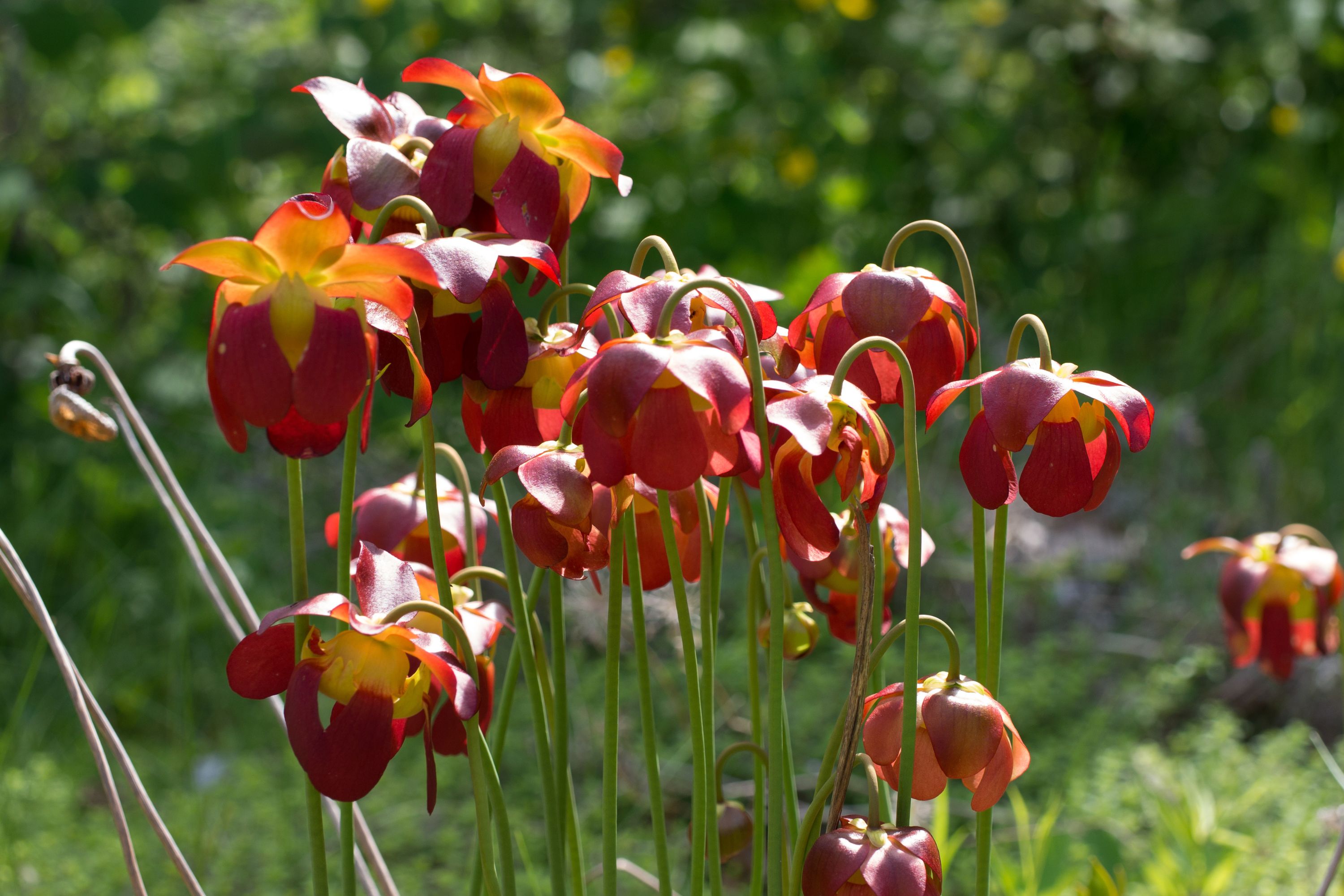Pitcherplant
(Sarracenia purpurea)

Description
Sarracenia purpurea, the purple pitcher plant, northern pitcher plant, turtle socks, or side-saddle flower, is a carnivorous plant in the family Sarraceniaceae. Like other species of Sarracenia, S. purpurea obtains most of its nutrients through prey capture. However, prey acquisition is said to be inefficient, with less than 1% of the visiting prey captured within the pitcher. Even so, anecdotal evidence by growers often shows that pitchers quickly fill up with prey during the warm summer months. Prey fall into the pitcher and drown in the rainwater that collects in the base of each leaf. S. purpurea also traps juvenile spotted salamanders with enough regularity that nearly 20% of surveyed plants were found to contain one or more salamanders in a 2019 study. The salamanders were observed to die within three to nineteen days, and may be killed as the small pools of water in the plant are heated by the sun. A single salamander could provide hundreds to thousands of times the nutrients of invertebrate prey, but it is not known how efficiently S. purpurea is able to digest them. Protists, rotifers (including Habrotrocha rosa), and bacteria form the base of inquiline food web that shreds and mineralizes available prey, making nutrients available to the plant. New pitcher leaves do produce digestive enzymes such as hydrolases and proteases, but as the individual leaves get older into their second year, digestion of prey material is aided by the community of bacteria that live within the pitchers. It is an introduced and naturalized species in Europe and the northwestern US. It is found in habitats of the native carnivorous species Darlingtonia californica, in the Klamath Mountains and northern Sierra Nevada. The plant has also been recorded in Washington state, Austria, the Czech Republic, Denmark, France, Germany, Ireland, Sweden, Switzerland, and the United Kingdom. In Britain and Ireland purple pitcher plant have invaded heather-rich peatbogs in Britain and Ireland and with the mild climate can grow in large numbers at the expense of local flora. Peatbogs are also under threat as the Sphagnum mosses do not grow near the pitcher plant
Taxonomic tree:







